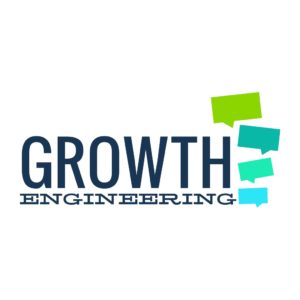The Goal of Learning and Development
Securing great return on investment is an essential – but often seemingly unachievable – goal of an L&D strategy. I often speak to Heads of HR, L&D and Company Directors who had great expectations of their Learning Management System but who just haven’t seen the return on investment they were promised. Their training program is just not the exciting, intriguing and behavior-changing godsend it was supposed to be. Their grand plans have failed, the promises have come to naught and they’re up the proverbial creek without a paddle.
The reason that training programs fail to secure ROI is that they generally focus on only a small proportion of learning. The ‘70:20:10’ problem of learning explains that while 70% of what we know we learn by rolling up our sleeves and getting stuck in at work and 20% we gain through observation of others, only a small 10% is gained through formal training practices, like workshops, eLearning modules, lectures and textbooks – and it is this that most training programs focus solely on.
Do the Math
It’s no wonder that organizations aren’t seeing a return on their investment – they’re investing 100% of their resources (not just money, but time, effort, accountability and support too) in just 10% of their employees’ knowledge. Of course the sums don’t add up!
What is needed is a culture of empowerment – a culture in which employees are empowered to develop themselves over and above the formal training program that they are enrolled on. In other words, rather than spending all of, say, a £20k training budget on a Learning Management System chock-full of eLearning modules to secure 10% of learning, organizations would be far better off spending £30 or £40k on an LMS that can tap into all forms of knowledge acquisition and secure 100% of learning. It seems like a bargain when you think about how much extra you’re getting!
Of course, even if you manage to reach the ultimate 100% of learning, there is no guarantee that you’ll see behavioral change – and without behavioral change, your ROI will amount to zilch.
This is because of the ‘forgetting curve’ of learning. It’s the idea that we lose up to half of what we learn if we don’t work to actively retain it, by which I mean unless we use and apply the content, it’ll leak out of our brains like sand through our fingers. Which is sad, really.
In order to not only hit the elusive 100%, but to also make sure none of that learning is lost, we need to empower employees to take charge of their own professional development. And how do we do this? The answer lies within your Learning Management System. The technology is already there; you just need to give your learners the means to take the reins.
Communicate and Collaborate
It’s often all too easy for learners to log on to their LMS, take an eLearning unit and then ride off into the sunset, armed with a certificate of completion but without having interacted with anyone else during the learning journey.
Not only is this a lonely existence, but it’s bad for learning. Remember the 20% of learning that occurs through observation of others? There’ll be none of that if learners can’t get together, talk, discuss the learning content and build upon the knowledge they gained during the formal eLearning module.
Social Learning
The answer is to build a dedicated communication and collaboration area on an LMS. Ideally, learners should log on to their LMS, take the eLearning module and then – instead of kicking up a cloud of dust behind them in their haste to leave – they should enter the communication area and talk about what they just learnt.
This kind of ‘social’ learning is the answer to the 70:20:10 problem. Learners have already smashed the 10%, so just the 70% and 20% are left to tackle. They know they can dive into the 70% once they’re back at work, but here’s the crux of it: they need to have a level of knowledge before they can do this. Sure, they can learn some things from zilch, but imagine being thrown in at the deep end with no prior knowledge of what you might need to learn… It’s daunting, demotivating and disempowering!
In order for employees to effectively learn at work, the first step involves social learning: the 20%. Once learners have become all-knowing beings through both formal and social channels, they can then set to work continuing to learn when they’re back in the office.
 Gamify Social Learning
Gamify Social Learning
We learn best when we’re having fun: that’s why learning should be gamified. ‘Gamification’ is the application of gaming mechanics to non-gaming scenarios to make difficult tasks more palatable. When we’re talking about gamification of eLearning, we mean awarding points and badges for moving through the module, getting answers right and completing units. And when it comes to an LMS, it means awarding badges for interacting with the Academy and other learners, moving through ‘levels’ (like Newbie to Sales Superstar) and climbing up a leaderboard to be crowned #1 Best Cleverclogs in the Whole Wide World.
Gamifying social learning is slightly different. It involves rewarding learners for collaborating, sharing knowledge, helping each other understand tricky topics and answering questions. When learners interact and share information in their dedicated communication and collaboration area, they become recognized as experts in their chosen field; the go-to guy for Telesales and the must-ask madam for fire safety. And doesn’t everyone want to be at least a little bit famous?
Empowerment
So you see, once you empower employees to take an active role in their own training and development – not only by giving them the means to do so but by rewarding them for doing it – learning will evolve in unique and unexpected ways. Knowing that there is a dedicated area where they can talk about their training means learners will keep returning once they’ve discovered something new; all aspects of the 70:20:10 problem will come together and complement each other.
When employees learn something new at work, they will be motivated to log on to the LMS and tell other learners about it – for which they’ll get some experience points and move up the leaderboard, reinforcing their expert status. And when other learners read about this new skill, they can then apply it when they’re back in the office. You’ll be able to forget the forgetting curve all together.
Rather than learning being discrete and lonely, an empowered culture allows learning to become social, interconnected and enjoyable. And, as it happens, far more effective.
The key to securing return on investment lies in an empowered learning culture. Once learners are given the means to learn socially and informally, there’ll be no stopping them. You’ll have created a culture of continued professional development – and have an ROI to really write home about.









